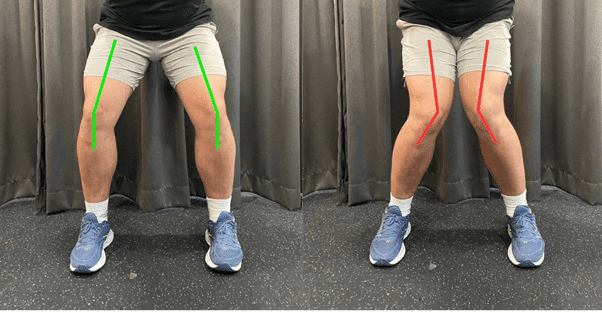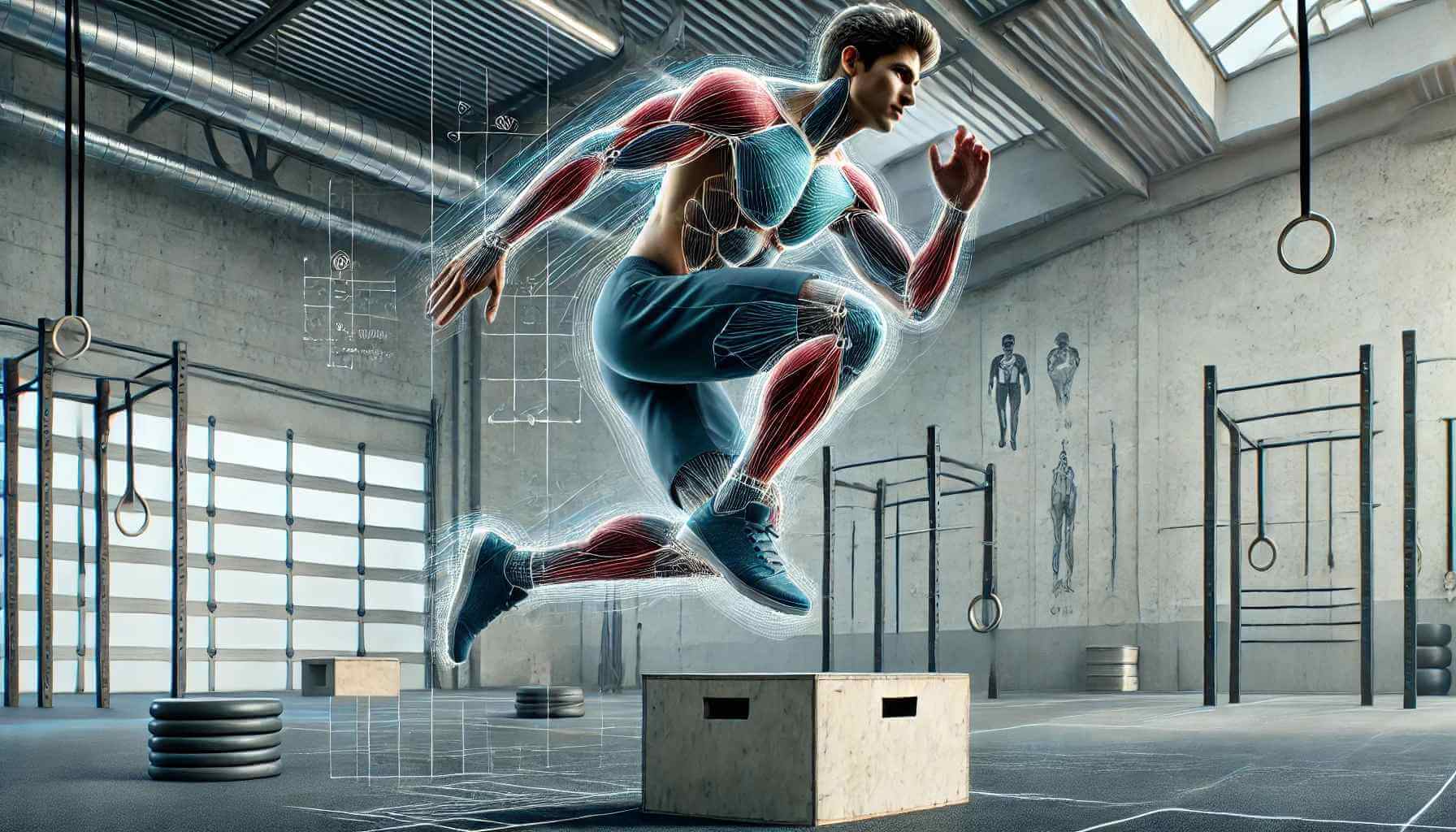Introduction
Returning to plyometric training after a lower extremity injury is a pivotal moment in an athlete’s recovery journey, especially in light of the growing popularity of hybrid training (Think Hyrox & Turf Games). These fitness regimes demand strength, endurance, and explosive power, making plyometric exercises crucial for optimal performance. However, reintroducing these high-impact movements too soon or without proper guidance can lead to setbacks and reinjury.
This blog post aims to provide a guide for physiotherapists, athletes, and coaches to navigate the return to plyometrics safely. The goal is to outline key rehabilitation guidelines and present a progressive framework for reintegrating plyometric exercises. Whether you’re a clinician helping an athlete regain their explosive power or an athlete keen to excel in these demanding workouts, this blog post will equip you with the knowledge for a successful return to plyometrics.
Guidelines when initiating a plyometric program
While there is no consensus in the published literature on the specific criteria, parameters, specific exercises, or principles of progression that should be used during plyometric training, there are some general contraindications and guidelines that should be considered:
When you should NOT start plyometric training/contraindications:
- Presence of persistent pain & inflammation over the lower extremity
- When the lower extremity injury is still in the acute or sub‐acute stage
- Presence of joint instability
- Lack of foundational strength, coordination & motor control
Clinical Checklist to return to plyometrics (Davies, Riemann & Manske, 2015)
- Full joint range of motion
- No pain or swelling in the lower extremities
- No pain during exercise
- Able to achieve 30s during single-leg balance
- Good neuromuscular control during functional movements (lunges, squats or step-ups) without compensations (i.e. trunk lean or excessive knee valgus)
- Free weight squats: 1.5-2.5 times body mass
- At least 90-95% strength compared to the non-injured limb
- No pain and good technique with lower-level plyometric drills
Note: Some coaches and clinicians may also consider subjective outcome measures to gain insight into the athlete’s psychological readiness/confidence to return to high-impact activities (i.e. IKDC Subjective Knee Evaluation, ACL-RS & Tampa Scale of Kinesiophobia)
This clinical checklist highlights the need for a progressive and measurable approach to introduce plyometrics and prevent the risk of re-injury. Coaches & clinicians must also conduct regular assessments & ensure that adequate core and lower extremity strengthening is continued even when introducing plyometric movements. Continuous feedback on form and video analyses can also be used to help the athlete to identify areas for improvement during this process.
Plyometric Progressions
After understanding the prerequisites, let’s work on understanding the progressions in plyometric training. In general, plyometric training can be broken down into four different stages (Collins, 2021)

Force Absorption Phase
This stage emphasizes eccentric control, helping the patient learn to slow down their body mass in a safe and efficient way in order to land safely. Here are some key fundamentals to cover regarding landing mechanics:

Form/Alignment – Ensure the shoulders are aligned with the hips, hips with the knees, and shoulders stacked over the knees, which should be over the toes (refer to image above).
Active Shock Absorption – This refers to the ability to absorb impact and land softly using muscles instead of landing loudly, which increases stress on the tendons and joints. While there are occasions to practice more forceful landings, starting with soft landings to teach proper mechanics can be an appropriate entry point in this phase.
Some exercises to consider here can include: Squat drops, depth drops.The main goal here is to establish strong and consistent deceleration patterns to support the desired movement.
Force Production Phase
This stage starts assessing and refining the concentric aspect of plyometric movements.
Evaluating maximal broad and vertical jumps, both bilateral and unilateral, can provide useful insights for programming and risk assessment. Whether working on vertical power (e.g., seated vertical jumps) or horizontal movements (e.g., broad jumps), the patient will need to manage a more demanding eccentric phase afterwards. Thus, mastering the prior phase is typically considered a key foundation before advancing.
Stretch-Shortening Cycle Phase
In this phase, we focus on evaluating and improving how well the muscles and tendons work together to perform movements that align with the athlete’s goals. We combine several movements from earlier exercises into one sequence (e.g. skater hops, barbell squat jumps), assessing how effectively the body can store and release energy during multiple landings. This is also where multi-contact assessments such as the triple crossover hop test and side hop test can be conducted to guide programming and progress.
As we increase the number of movements in a sequence, it’s important to observe & reassess how the body absorbs and generates force, as the way an athlete lands on the second or third hop might differ from the first.
Maximal Demand Phase
In this stage of plyometrics training, the emphasis will be on sports specific drills and maximizing the athlete’s ability to return to their goal activity. The exercises chosen here should be leaning in favor of more dynamic and reactive drills (i.e depth jumps or sport specific multi-tasking with change of direction drills). It is also crucial to note that as an athlete progresses through plyometric exercises, he/she must be able to keep their eyes up as this mirrors how they need to focus during sports and other activities. Relying too much on visual cues for your movements can be counterproductive!
Closing Thoughts
By following a structured approach that includes a clinical checklist and recognizing when it’s not safe to proceed, athletes, coaches, and clinicians can effectively minimize the risk of re-injury. The progression from the force absorption phase to maximal demand phase ensures that athletes develop a solid foundation before tackling more complex movements, with a strong emphasis on proper technique.
Additionally, integrating ongoing feedback and assessing psychological readiness will enrich the recovery process. This comprehensive strategy not only promotes physical strength but also cultivates mental resilience, enabling athletes to overcome fears and boost their confidence in their abilities.
References
Collins, S. (2021). Physio Network. https://www.physio-network.com/blog/physio-guide-to-plyometrics/
Davies G, Riemann BL, Manske R. CURRENT CONCEPTS OF PLYOMETRIC EXERCISE. Int J Sports Phys Ther. 2015 Nov;10(6):760-86. PMID: 26618058; PMCID: PMC4637913.
Suchomel TJ, Wagle JP, Douglas J, Taber CB, Harden M, Haff GG, Stone MH. Implementing Eccentric Resistance Training-Part 1: A Brief Review of Existing Methods. J Funct Morphol Kinesiol. 2019 Jun 24;4(2):38. doi: 10.3390/jfmk4020038. PMID: 33467353; PMCID: PMC7739257.


